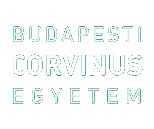Samay, Mohammad Ali (2022) The Dynamics of Eurasian Comprehensive Security, Political and Economic Cooperation. Doktori (PhD) értekezés, Budapesti Corvinus Egyetem, Nemzetközi Kapcsolatok és Politikatudományi Doktori Iskola. DOI https://doi.org/10.14267/phd.2022078
Teljes szöveg
|
PDF : (dissertation)
1MB | |
|
PDF : (draft in English)
527kB |
Hivatalos URL: https://doi.org/10.14267/phd.2022078
Kivonat, rövid leírás
The dissertation has four main chapters. I begin with the discussion of the philosophical and historical concept of Eurasia (Chapter No 2.). This contains an overview on contemporary political and security concerns of the great powers in Eurasia and a deep analytical study of philosophy and history of the terms Eurasianism(s), followed by subchapters such as: the standpoint of the United States in Eurasia, the strategic path of Russia in Eurasia, the strategic view of Turkey to Eurasia, China’s standpoint on Eurasia and India from Indo-Pacific to Eurasia. I found that Eurasian powers are capable to develop a global partnership model at the inter-regional and international level by challenging post-Soviet unipolar world order. I argue that this step generates conflicts and misunderstandings in high-level politics between Eurasian powers and the West, represented by organizations like NATO and the European Union. I believe that the era of misunderstanding will concede its place to “genuin strategic partnership and trans-Eurasian security system” applied by Brzezinski, Z. (Brzezinski, Z., 1997) between Eurasia and Europe, on the one hand, and Eurasian powers and the US, on the other. I made the argumentation that the Eurasian continent is divided between several nations and sovereign countries in three different levels: great, middle, and small powers. No unique power has the real capacity to shape or reassert an empire in order to rule the Heartland, WorldIsland to command the world. The bilateral and multilateral relations between Eurasian countries or powers are based on mutual recognition and equality. I proved the only issue that involve Eurasian powers outside their territory or borders are their inherited historical, cultural, and geopolitical frontiers. In the current geopolitical structure of world politics, the case of influence over international or regional initiatives is the issue of interest among countries seeking global or regional hegemony. The Heartland and the World Island in Eurasia are places where the frontiers and interests of all Eurasian powers meet or even encircle into one other. Because of this complex structure, regionalism or regional integration is a considerable part of their foreign policies. According to my findings, Halford Mackinder had addressed the geopolitical significance of the Heartland under the era of historical empires from a classical realistic point of view. My opinion is the implementation of such a political order or returning to the 20th century political settlement in the current international political, economic, and security structure is impossible. At the same time the Eurasian great powers failed to establish the western type liberal and neo-liberal political order. I raised the idea of fourth political theory that could lay an adaptable political structure or framework among and across the region. The next (No 3.) chapter focuses on the economic, trade, and geopolitical relations between Eurasian powers, and has two main parts. The first part contains an overview on IntraRIC+T (Russia, India, China + Turkey) investment and trade relations providing data about India-China, India-Russia, Russia-China, Russia-German and Russia-Europe trade and economic relations and the discusses the case of geopolitical and geostrategic interests of given countries. The second part of the chapter discusses the complexity of the BRICS (Brazil, Russia, India, China and South Africa). The influence and contribution of BRICS in world politics and economics, intra-BRICS achievements and failures, the case of BRICS New Development Bank and the case of intra-BRICS investment and trade are the main terms of this part. I will also try to make a theoretical background for the process to find what kind of cooperation BRICS is primarily involved in, whether it is a new occurrence in the global partnership era and what mechanisms and projections could raise a better and deeper economic cooperation and integration between these nations by applying theories of global and regional economic integration in the conclusion. The next (No 4.) chapter focuses on the Eurasian Economic Union. The subchapters in this part of my dissertation are: the treaty of the Eurasian Economic Union (EAEU), Russia and the EAEU, the historical and evolutional background of the EAEU, and the economic situation and the results of the EAEU in present. The last chapter is the conclusion section which contains an analytical outcome of the dissertation. For data collection to conduct my study, I used secondary sources such as books, journal and online articles related to the topic and official statistics and indicators from the World Bank, International Monetary Fund, Organization for Economic Co-operation and Development and International Trade Centre etc.
| Tétel típusa: | Disszertáció (Doktori (PhD) értekezés) |
|---|---|
| Témavezető: | Trautmann László |
| Tárgy: | Nemzetközi kapcsolatok Gazdaságpolitika |
| Azonosító kód: | 1260 |
| Védés dátuma: | 19 december 2022 |
| DOI: | https://doi.org/10.14267/phd.2022078 |
| Elhelyezés dátuma: | 11 Nov 2022 09:14 |
| Last Modified: | 21 Dec 2022 08:36 |
Csak a repozitórium munkatársainak: tétel módosító lap

 Letöltési statisztika
Letöltési statisztika Letöltési statisztika
Letöltési statisztika